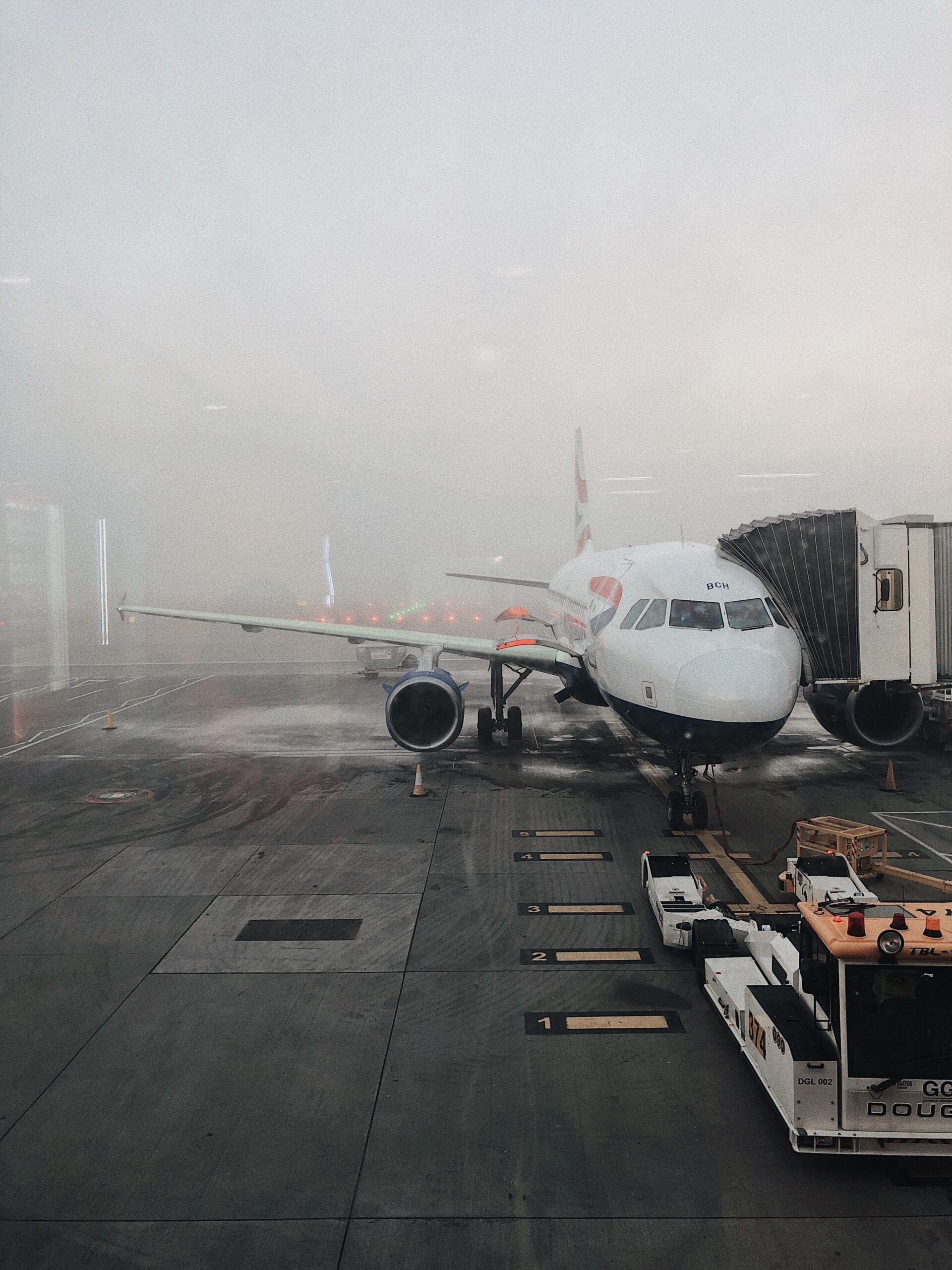Pilots often fly in all types of weather conditions and climates, and sometimes this weather can be unpredictable. It is an important job, as the weather can often cause unnecessary complications during flights. There are many things that can be affected by the weather on a flight. Sp, where do pilots get weather information to ensure flight safety?
In order to make good decisions, pilots need to understand and work to predict the weather. Keeping an eye on the weather can easily make the difference between a safe and smooth flight and a dangerous one.
In this article, we will answer all of your questions about how pilots get their weather information and why it is so important. It will help you understand what a pilot deals with every day.
Table of Contents
What is the Importance of Knowing the Weather For Pilots?
Before taking off, pilots should be aware of the weather conditions, such as the wind speed and direction. Certain weather conditions can make flying difficult or even dangerous, and the pilot needs to be aware of any situations that may arise.
Conditions of the wind
In aviation, wind speed is measured in knots, which is something that can often cause issues. For a given distance, the closer the isobars are together, the greater the pressure change.
As a result, the wind will be stronger, so you’ll be able to tell from these charts what direction the wind is coming from and how strong it will be. Pilots should be aware of any issues that the wind may cause, as it could affect their flight’s safety if unmonitored.
Conditions of the weather
Air traffic controllers will need to extend landing gaps because of conditions like fog, snow, ice, and crosswinds. This will reduce the number of planes an airport can handle.
The weather that is causing issues on the ground can make it more difficult and slower for planes to taxi, and many commercial flights may be affected by this weather.
It is especially dangerous for aircraft during night flights to have icing problems. In this case, weather reports are extremely important. Pilots carry out flights while considering possible dangers. In case of sudden changes in weather conditions, pilots should keep up-to-date information and change their flight routes if necessary. Flights may be delayed or canceled when dangerous weather conditions develop suddenly.

How Do Pilots Get Weather Information?
Using websites, radio and telephone briefing services, radio broadcasts, pilot reports, satellite and weather radar imagery, and their own eyesight, pilots can access weather information. Pilots and air traffic controllers will be able to make the best decisions to ensure the safety of the flight if they are aware of the weather forecast conditions and current conditions.
The weather conditions, such as cloud heights, forward visibility, thunderstorms, and severe weather phenomena, will have an effect on how flights operate on a daily basis, and before a flight takes off, the pilot must be aware of the weather so that they can make the best decisions or even alter the flight.
Pilots will have access to several FAA-run (Federal Aviation Administration) and maintained telephone services in the event that the internet becomes unavailable. The Telephone Information Briefing Service (TIBS) and the In-person Briefing Service are two main telephone services.
What Sources Do Pilots Use To Obtain Weather Information
- Internet / Websites
- Radio and Telephone briefing services
- Telephone Information Briefing Service (TIBS)
- In-person Briefing Service
- Radio broadcasts
- Pilot Reports
- Satellite and weather radar imagery
- Their own judgment and eyesight
How Can Pilots Obtain Aviation Weather?
Pilots and air traffic controllers have had more access to weather information and forecasts in recent decades, thanks to improved methods. In order to maintain everyone’s safety, it is imperative to have accurate weather information at all times during the flight process. Pilots can access weather reports tailored to aviation by using the following methods:
Aviation Weather Center
The Aviation Weather Center provides weather data from the NOAA in a variety of formats that will cover the entire US at all altitudes. No matter what type of plane a pilot is flying, this service is often used by them.
Pilots can use the aviation weather center to check the local weather around an airport, which can be useful for planning takeoffs and landings. To check the route of the flight, the pilot will also be able to view the weather across the entire United States.
Text-based or graphical images can both be used to provide this information, and they will provide all of the relevant information. Pilots in training will be taught how to read, decode, and interpret this weather information.
Radar For Weather Conditions
Weather radars are particularly useful for aircraft with Instrument Flight Rules (IFR). They include airline planes, private jets, and advanced technology aircraft. Whenever experienced weather enters the event area, these radars transmit the weather conditions to the cockpit systems.
In this system, which provides information about precipitation, the pilots can see the intensity of precipitation in the airspace through different colors on their screens. By analyzing the colors on the screen, pilots can determine the severity of weather events or storms. This allows them to change their route whenever necessary.
Automatic Terminal Information Service (ATIS)
A pre-recorded message broadcast continuously on a radio frequency at busy airports is known as ATIS (Automatic Terminal Information Service). ATIS publications provide important information on aircraft arriving or departing an aerodrome, including weather conditions and runway conditions. This reduces the workload of air traffic control units and congestion on communication frequencies.
ATIS records are updated at regular intervals (usually every 30 minutes) and whenever there are significant changes. An ATIS message is assigned a letter, starting with A. The next letter of the alphabet is used to name each new ATIS message. As a result, when the pilot reports the current ATIS code (letter) to the air traffic control (ATC) unit, the ATC unit knows that the pilot’s information has been updated.
Automated Weather Observing System (AWOS)
The purpose of the automated weather observing system is to provide weather forecasts and climatological information, as well as support aviation and meteorological operations. In the United States and Canada, automated weather observing systems have become the backbone of weather observation due to their efficiency and cost savings. A variety of methods are used by AWOS systems to distribute weather data.
The transmission of a computer-generated voice message via radio frequency to pilots in the vicinity of an airport. AWOS must update the message at least once per minute, and this is the only mandatory weather report. An optional computer-generated voice message can be delivered via a modem over the telephone. At least once a minute, the message is updated.

Frequently Asked Questions
What Websites Do Pilots Use To Check The Weather?
Aviation organizations provide weather reports to pilots, but there are also weather reports available for use in special-purpose applications. Many pilots today use these, although they are generally included in private planes. The following are two of the most popular of these apps.
WINDY
This app provides storm and wind forecasts for your current location, focusing on storm and wind reports. Through their visual content, it shows pilots which regions they should avoid flying in. It is especially useful for pilots traveling in dangerous areas since it focuses on extreme weather conditions like wind and storms.
MyRadar
MyRadar provides a quick overview of potential radar precipitation heading your way at-a-glance. There are many features available for both casual weather enthusiasts and seasoned weather professionals, including high-definition radar, NOAA weather alerts, temperatures, forecasts, and a detailed hurricane tracker.
What Is The Best Source Of Aviation Weather?
Aviation Weather Center is the most reliable and accurate source of weather reports for pilots. This center, which was approved by the Federal Aviation Committee, aimed to provide pilots with the most accurate information.
Aside from weather reports for the airport where it is located, it also publishes weather reports for the entire geographical area along the flight route. By predicting the weather changes over the next few hours, pilots can give the appropriate precautionary instructions. Additionally, it enriches the data with graphics and visual content to help pilots better understand the severity of weather conditions.
What Are The Most Hazardous Weather Conditions For Pilots?
Weather conditions can be very dangerous in aviation. It is possible for two or three dangerous weather conditions to coexist. That’s why pilots should examine these weather reports and take precautions accordingly. These are five of the most dangerous weather conditions we’ve compiled.
Thunderstorms
Thunderstorms produce the most severe weather you can find in aviation. And you don’t need to be in a thunderstorm to be in trouble. Thunderstorms can launch hail out of themselves up to 20 miles away. Strong downdrafts and microbursts can form underneath them. And severe turbulence is always a possibility near convective clouds.
Turbulence
Air intrusions can be erratic, but they can deafen an aircraft in a variety of directions, and severe ones can be quite dangerous. The weather conditions must be observed by pilots in order to avoid these severe turbulences.
Airplanes also experience turbulence when they are in close proximity to each other. There is some amount of wake turbulence produced by every aircraft. Turbulence during takeoff and landing is caused by air currents from power engines. Take off behind a larger aircraft at least 3 minutes after it disperses its vortices. Land beyond their touchdown point if you’re landing behind a large aircraft, to avoid flying through their vortices.
Wind Shear
Over a short distance, wind shear occurs when the wind speed or direction changes. It is usually associated with temperature inversions or density gradients and can occur horizontally or vertically. It is possible for wind shear to occur at high or low altitudes. The main source of wind shear; thunderstorms, temperature inversions, surface obstructions, and frontal activity
Icing
Structure icing only occurs when temperatures freeze and visible moisture is present. It is possible to run into low freezing levels with the right weather system even as things heat up this Spring. Most icing bands are no more than 3,000 feet thick, and the most severe icing occurs at the tops of the clouds. In these conditions, pilots avoid cruise flight on cloud tops and will always leave the area if the icing is worse than expected.
Microbursts
A microburst (localized columns of sinking air (downdrafts) within a thunderstorm that are usually less than or equal to 2.5 miles in diameter) is a serious climb performance hazard that you cannot overcome. During microbursts, downdrafts can reach 6,000 feet per minute.
Are Pilots Required To Report Weather?
Pilot reports, also known as PIREPs, describe the actual weather conditions encountered by an aircraft during flight. Traditionally, these reports are sent via radio to a ground station for dissemination, but they can also be made by telephone if necessary. In recent years, aircraft with appropriate sensors have been able to automatically send meteorological reports through the Aircraft Meteorological Data Relay (AMDAR) program.
Pilots should strive to provide accurate PIREPs. Mandatory information includes the location, the time, the altitude, the type of aircraft, and a description of the hazard. Pilots should refer to the National Aviation Authority (NAA) AIPs or any other appropriate publication when describing the intensity of icing or turbulence.
Final Thoughts on Where Do Pilots Get Weather Information
Pilots need to know what the weather is going to be like in the area where they are flying because they are flying in weather-prone areas. Certain weather conditions can make flying uncomfortable, break aircraft, and prevent pilots from seeing the ground at all.
Nowadays, pilots can fly into weather that is far worse than what a fighter pilot might experience. Pilots need to know their own limits when it comes to what they and their aircraft are capable of flying in, and the only way to do that is to get detailed and timely weather information.

